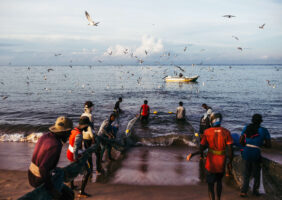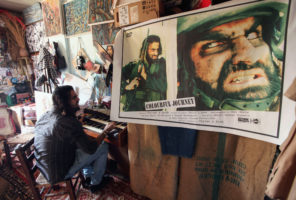Ad Free. Reader Funded.
Your contribution supports our partnership with the author of this piece. On top of their article pay, 50% of all contributions go directly to this journalist.
% of $ Goal
Total number of contributions so far:
0
Total amount raised for journalists
$0
“One thing I really appreciated about working with Hidden Compass is that it’s a space where there is time for nuance and complexity. By donating, that’s what you’re supporting. You’re able to help us as writers, but also as an outlet, continue to tell these kinds of stories.”
- Anna Polonyi, Hidden Compass Journalist
“The reason why I contributed was because the article that I read really resonated with what I was feeling. I felt like the author was in my head... It just moved me and I felt like I needed to do something.”
- Hidden Compass Reader
Techno music pounds through the cavernous halls of Lukiškės nightclub in the center of Vilnius, the capital of Lithuania. Harps, horns, panpipes, and other handcrafted instruments of traditional Lithuanian folk music bounce off the concrete walls and steel doors, marching to the rhythms of modern synthesizers and drum sequencers. The sound is simultaneously nostalgic and futuristic — soothing yet utterly overwhelming.
On the dance floor, machines spit out plumes of smoke like freshly fired cannons. Strobes ignite and reignite, intense and unpredictable as artillery fire, filling the space with blinding light — now a pale white, now a blood red.
In my oversized Hawaiian shirt with mismatched colors, I feel hopelessly out of place among the crowd of young Lithuanians who, sporting black leather jackets, camouflage pants, and combat boots, look more like soldiers than civilians. Burning through a week’s supply of Marlboros in a single night and chugging cans of Švyturys Ekstra, they sway back and forth and back again in perfect unison, their movements as robotic as the songs they dance to.
Through light and smoke, I catch glimpses of a couple wading through the mass of bodies. Hands glued together, they sneak upstairs and disappear behind the bars of one of the countless empty cells. In another cell, a shadowy figure looms above the dancers.
Several generations before these partiers were born, this very place was filled with hundreds of inmates who would soon be killed en masse. Before this place became a nightclub, it was one of the biggest and most feared prisons in the country. During the Second World War, when Lithuania was occupied by the Soviet Union, Lukiškės served as a pitstop for inmates on their way to the gulag. As the Nazis steamrolled their way to Moscow and the Soviets retreated back into the Russian heartland, these inmates were summarily executed. The reasons for the massacres are still unknown. Some historians argue the Soviets feared the inmates would fight for the Germans — thousands of Lithuanians joined Nazi ranks during the war. Others posit they murdered the prisoners simply because they could.
The memory of Soviet occupation — which continued after the Second World War and lasted until the USSR’s collapse in the 1990s — weighs heavily upon Lithuanians, as it does in the other Baltic states of Latvia and Estonia. With the Russian army knee-deep in Ukraine, fighting to regain the territories that gained independence decades ago, I can’t help but think of the partygoers around me as a lost generation, thrown into the clutches of a past that seems doomed to repeat itself.
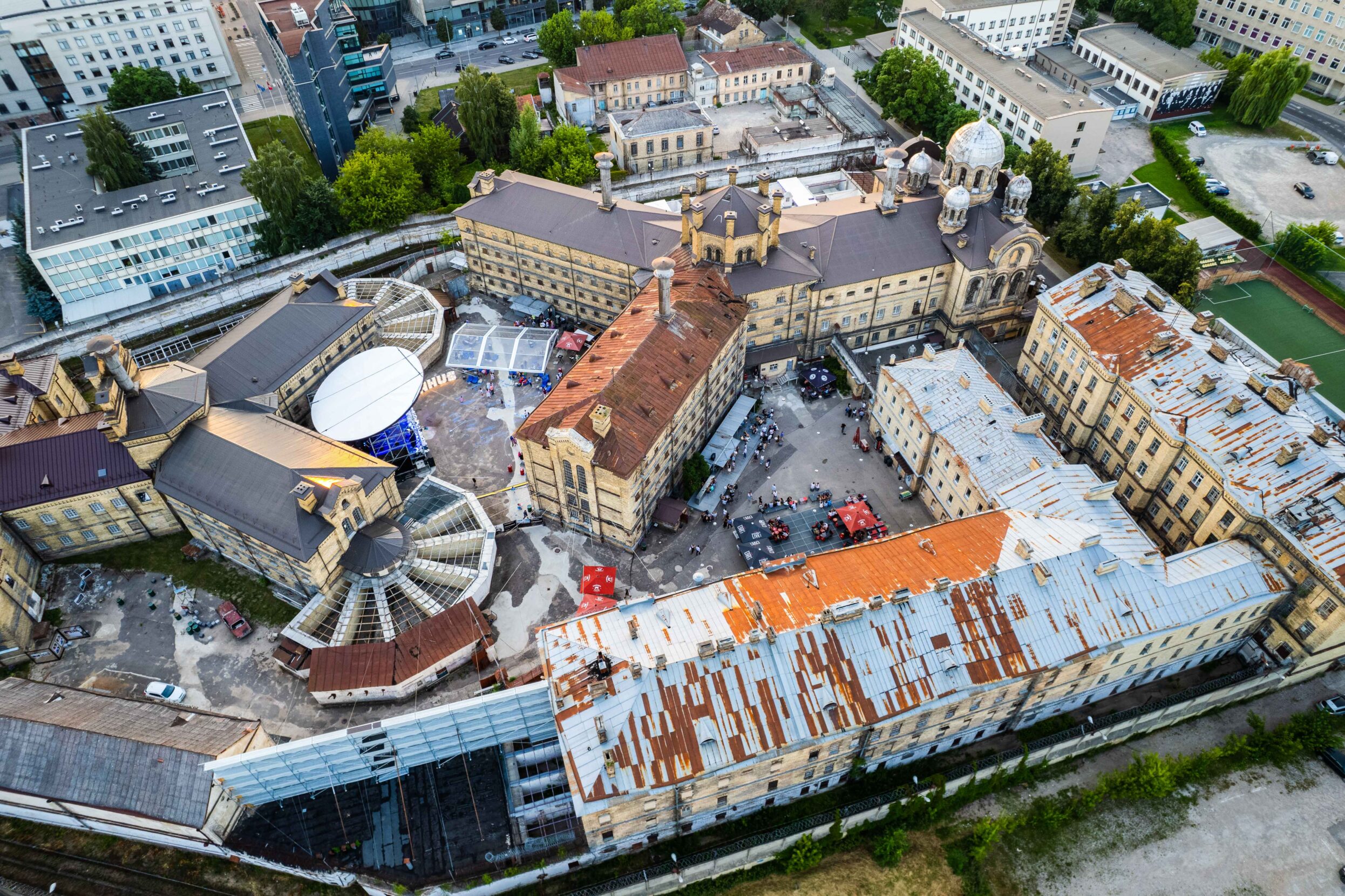
An aerial view of Lukiškės Prison in Vilnius, Lithuania. The complex began as a Catholic monastery but was converted to a prison in the mid-1800s. To accommodate an increasing number of prisoners, much of the original facility was torn down in the early 1900s and rebuilt using philosopher Jeremy Bentham’s panopticon design concept. The facility stopped operating as a prison in 2019. Photo: Top Lithuania / Adobe.
~~
The next day, hungover and ears ringing, I turn my wallet inside out in search of the four euros necessary to buy a ticket for the Museum of Occupation and Freedom Fights. The cashier, a student named Dunate, whom I have just learned also went to the party at Lukiškės, jokingly asks me if I had too much to drink. Yes, but that’s not why I am struggling to find my money: It is dark in the building. The museum’s opulent, neoclassical facade contrasts sharply with its sparse, shadowy interior. The barred-up windows are blocking so much sunlight that I have to step outside into the gorgeous, scorching summer day to count my coins.
Back inside, a couple from Florida with matching handheld fans ask Dunate if she can crank up the air conditioner. Dunate shakes her head, her forced smile betraying the faintest hint of pleasure.
“For nearly 50 years,” she explains, “this building was used as a prison by the KGB, the Soviet Union’s secret police. We restored everything to how it was, so you can see exactly what the prisoners went through.”
As I descend into the cold and narrow basement lined with cells, I have a vague idea of what to expect. I had, after all, read Aleksandr Solzhenitsyn’s Gulag Archipelago while studying Russian literature and history in college, and I’m aware of the horrors that took place here.
Solzhenitsyn had been fighting the invading Nazis when the secret police intercepted a letter in which he questioned the military tactics of Joseph Stalin — an offense for which he was imprisoned in one of the USSR’s 30,000 gulag camps scattered across the Siberian tundra and beyond.
Mining gold and laying bricks in sub-zero temperatures, surviving on meager rations of spoiled porridge and watery soup, the suffering endured by Solzhenitsyn and his fellow inmates was kept secret from the rest of the world for years. But while imprisonment took its toll on Solzhenitsyn’s health, he did not let it kill his spirit. Even without access to pen or paper, the soon-to-be-famous writer documented every aspect of his time in the gulag. At night, unable to sleep, he composed large portions of his 672-page memoir in his head, reciting passages to himself until they were embedded in his brain.
When, at the end of the Second World War, the Soviet Union gained control over Eastern Europe, the Kremlin padded its slave labor force with political dissidents from Poland, Bulgaria, Romania, Hungary, Yugoslavia, Czechoslovakia, Estonia, Latvia, and Lithuania.
On the walls of the museum’s cells, black and white portraits show the names and faces of people that were once held here. I see politicians and priests, businessmen and factory workers, women and men, old and young.
I try to imagine myself among them, woken up by a knock on the door in the dark of night, dragged onto the street in my pajamas, and driven to this otherwise beautiful building for questioning. I imagine being seated at a tiny desk with a photograph of Stalin peeking over my shoulder. The false confession would come, extracted through torture or through threats to my family. Then I’d be forced down into this cold and narrow basement, which would only grow colder and narrower with each passing day.
A voice echoes down the hallways and pulls me out of my nightmarish daydream. It belongs to a bald, middle-aged docent escorting a group of tourists past my cell.
“More than 1,000 people who came here never made it out alive,” he says.
There are countless museums and buildings just like this one throughout the Baltic nations — memories and horrors preserved.
As a freelance journalist interested in how the grand and often incomprehensible currents of history shape us on a personal level, I have come to the Baltics to study the scars the Soviet occupation left behind: physical scars, represented by buildings like Lukiškės and this museum, but also mental ones, invisible to the naked eye and revealed only through small expressions and gestures, like Dunate’s refusal to turn on the air conditioner or a statement from the docent to his half-interested entourage:
“Historians call it political persecution. We [call it] what it is: genocide.”
~~
He creeps closer to the unmarked cabin up ahead, his finger on the trigger of his machine gun.
Two weeks later, I check into a hostel in Tartu, the second largest city in neighboring Estonia. The hostel is located on the top floor of an art nouveau building constructed in 1907, when Estonia — like Lithuania — was still part of the Russian Empire.
The dorm room I stay in has 12 beds, all of which are attached to the wall so they can be folded up to create space. Wedged between a daycare and an Orthodox Church, this place reminds me of a kommunalka, a communal apartment where, in Soviet times, several unrelated families lived together under a single roof, sharing one kitchen and one bathroom in the name of socialism.
The volunteer at the reception desk, an 18-year-old backpacker from Los Angeles, tells me that, in recent months, the hostel has been renting beds to Ukrainian refugees as they settle into the country. I do not meet any during my stay here, but I do cross paths with a middle school teacher from Vilnius. Folding her laundry into perfect squares, the middle-aged, bespectacled woman, her graying hair tied into a bun, greets me with a smile as I climb onto the berth above hers. She appears eager to start a conversation with me, but doesn’t. Perhaps she is too shy to take the first step.
Fortunately, an opening arrives when I reach for my copy of Vilnius: City of Strangers, a history of her hometown by urban scholar Laimonas Briedis.
“I keep telling my children to read it,” she says, referring to her students, “but they don’t listen. They aren’t interested in the past. Then again, they’re only 12,” she says.
Her students are in the middle of their summer break. She, too, is off, and while she has previously spent her vacations in the French Riviera, a combination of inflation rates — which reached over 20% in Lithuania — and donations she made to the Ukrainian army meant such trips were now out of her price range.
Speaking of Ukraine, she asks if I have seen “the news.” The day before, Wagner chief Yevgeny Prigozhin had marched toward Moscow with his mercenary army — a turn of events that could well have led to the Kremlin’s destruction, but ultimately didn’t. “I was looking at Twitter all day, hoping,” she sighs.
Unlike me, the schoolteacher does not have to rely on her imagination to picture what would happen if Russia conquered Kyiv and then moved on to the Baltics, as Volodymyr Zelenskyy and several Kremlin-backed propagandists have suggested. At 42 years of age, she has experienced the Soviet occupation of Lithuania firsthand. She can still clearly recall the masks her parents put on when they attended Communist Party meetings, and how she stood in line for hours just to buy a stick of butter from the state-owned supermarket. She remembers the poverty and paranoia, the dejected quietness of her grandfather, who had survived deportation to Siberia, and the framed photograph of her other grandfather, who had not.
When Vladimir Putin invaded Ukraine, her wounds — which had never really healed — reopened.
“Russia damaged us as human beings,” she tells me. Her choice of words are heavy and absolute, resembling those of Solzhenitsyn.
There is a deep sadness in her voice, yet her eyes remain bone dry. “Tomorrow will be the same as today. It’s why we are so much behind now. I wonder how it would be if it had never happened. All the smart people were destroyed, or left the country.”
When I ask what country she would move to should Russian soldiers storm the medieval gates of Vilnius, she snaps back, “I will not go anywhere. I will stay and fight.”
Surprised by her vehemence, I watch as she transfers her meticulously folded floral dresses from her bed into her suitcase.
“I mean,” she adds, more softly but no less resolutely, “I don’t think I would be a good soldier. But if I have to, I will train, and I will try my best.”
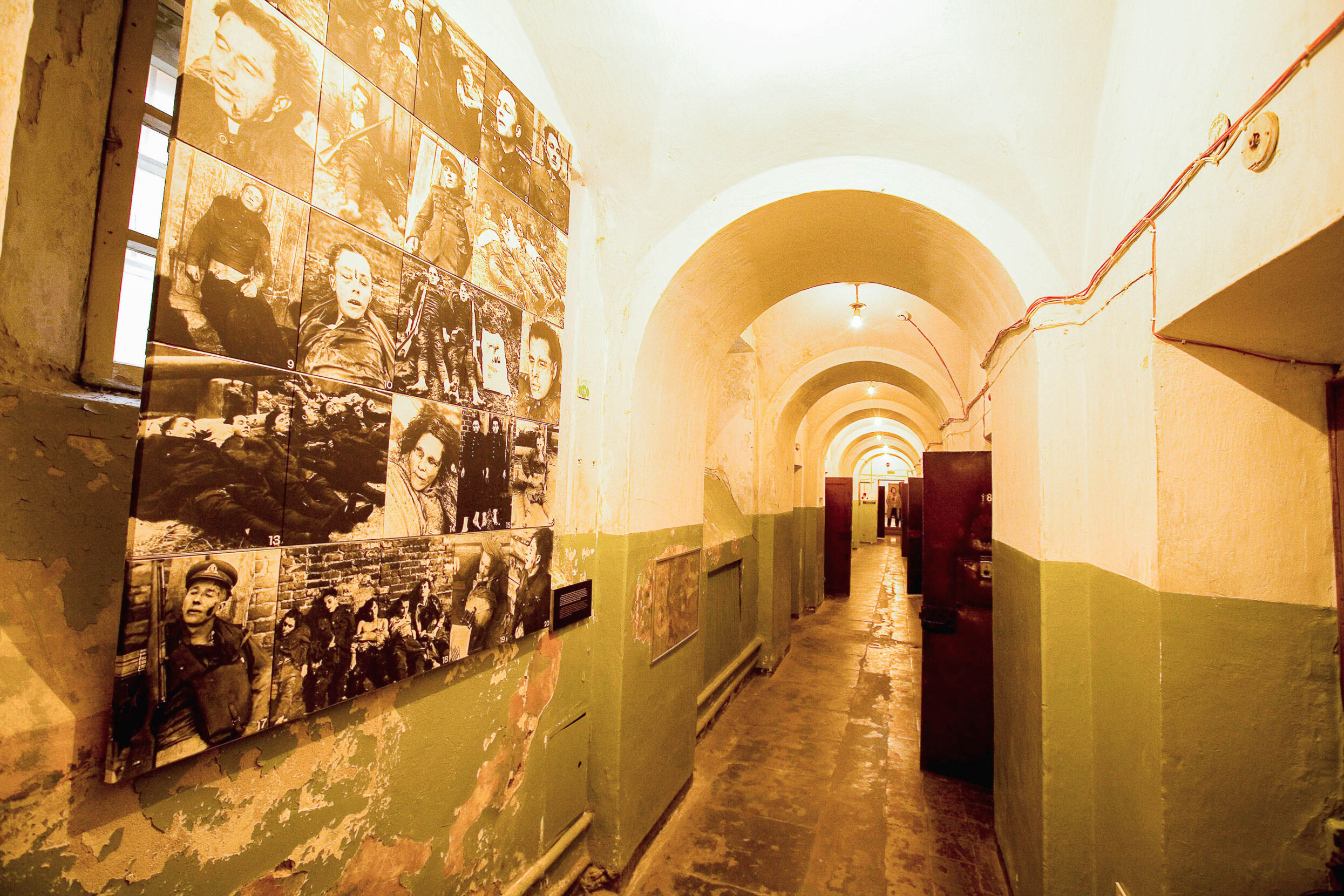
Across the Baltics, former Nazi and KGB facilities have been turned into museums. In one of these museums in Vilnius, visitors can walk through the same halls detainees walked through, step into the holding cells, and see the faces of those who were held here. Photo: Frederic Reglain / Alamy.
~~
Eating borscht at a Russian restaurant, empty save for the smartly dressed waiter who bore an uncanny resemblance to Putin with his bald head and small, impenetrable eyes, I replay my conversation with the schoolteacher inside my head.
Traveling through the Baltics, I have become increasingly interested in how people — especially young people — are coping with the war, with the threat of Russian imperialism upsetting the relatively peaceful and prosperous existence they had grown accustomed to in recent decades. I expected to encounter mostly despair and hopelessness: a growing sense that history was repeating itself and there was little anyone could do to stop it. But increasingly, that does not seem to be the case. At least, not entirely. The schoolteacher refuses to be intimidated. And Dunate is still going to her classes, working on her dissertation about prostitution in Lithuania, investing in her future.
Born and raised in Amsterdam, I have only encountered war in books or on television. I have never grappled with the possibility of pausing my career and picking up a gun to physically defend the borders of my country — and, in all likelihood, I never will. My first assumption had been that, in such an event, the citizens of the Baltics would want to flee to a place where they could continue their prewar lives as best as possible. But what to me appeared unquestionable, this schoolteacher saw as unthinkable.
She would stay out of pride, out of a desire for justice — out of defiance.
~~
Machines spit out plumes of smoke like freshly fired cannons. Strobes ignite and reignite, intense and unpredictable as artillery fire.
A little over 40 miles south of Tartu, close to the Russian border, Mart Kuusk lies motionless in the dirt. With branches taped to his helmet and his face covered in black and green paint, Mart melts into the forest floor like a snake ready to strike. Above him, birds twitter and leaves rustle in the wind. One throaty screech from his commander, and Mart jumps into action. Running from pine tree to pine tree, he creeps closer to the unmarked cabin up ahead, his finger on the trigger of his machine gun. A smoke bomb sizzles and explodes, filling the forest with an impenetrable mist. Then, all hell breaks loose.
This could be a scene from 1918, when Estonians took up arms to liberate their country from the invading Bolsheviks, but Mart and his fellow soldiers have iPhones and drones, and, occasionally, the rumble of a fighter jet shakes the earth as the jet soars overhead.
The year is 2023, and this is not an actual battle. It is a training exercise near the city of Voru.
Mart, a tall, gaunt man with the unkempt hair of a rockstar and the thousand-yard-stare of a seasoned soldier, remembers exactly where he was on February 24, 2022, when Russia attacked Ukraine. The invasion coincided with the birthday of the Republic of Estonia, and Mart was at home with his family eating kiluvõileib, traditional egg-and-fish sandwiches. When he turned on the television, he saw past, present, and future converge into a single point in time.
Memories of his childhood in Soviet Estonia, a place he describes as “a mental prison, where lies are the truth and the truth is a lie,” were being played on every channel. “I felt ashamed,” he says. “Ashamed of being human, and also of the fact that human nature appeared to be unchanging.”
During the following days, as Western leaders struggled to piece together Putin’s endgame, Mart knew exactly what was going to happen: the same thing that happened a century ago. A demoralizing fate, it seemed. And yet, Mart’s shame and anger soon gave way to something else.
“I can’t imagine the possibility that I would voluntarily surrender to the criminal mafia system that is the Kremlin,” he says.
Defiance takes many forms: from housing Ukrainian refugees to saving up donations for the war effort despite rising inflation. For Mart, defiance took its most combative shape yet: joining the Estonian Defence League, a century-old paramilitary organization. Created the same year as the Estonian Republic itself, the League was disbanded when the USSR set up shop in the country, only to be reinstated when the Soviet Bloc collapsed in the 1990s. Managed by the Estonian Ministry of Defence, the League turns ordinary civilians into professional tactical teams.
Although the organization does not claim to train its members with a specific conflict in mind, there is little confusion as to who the imaginary enemies hiding inside that cabin are meant to represent.
“I had underestimated the reality of Russia for most of my life and therefore stayed away from military training,” Mart confesses. “If it is necessary to confront the Russians, you must be ready for it. My personal condition when trading my life is 1 to 10. This means that if I die, 10 tiblas have to pay for it with their lives. Ten at least.” Tiblas is an Estonian insult for Russian-speaking citizens of the former USSR who are hostile toward other countries and cultures.
“I am a trained machine gunner in my squad,” Mart continues. “My gun fires 800 rounds per minute. I believe we can do it.”

In the woods near Nurmsi, Estonia, an Estonian Defense League soldier demonstrates the correct firing position using a KSP 58 machine gun. Mart Kuusk and others have undergone similar training as they prepare for the possibility of war. Photo: Spc. Steven Lee / U.S. Army.
~~
When Gintas Reisgys, an architect from Vilnius, initially learned Russia had invaded Ukraine, his first instinct was to flee.
He was driving his daughter to school and trying desperately to remain calm in front of her. After she left the car, Gintas rushed to the nearest ATM, took out as much cash as the machine allowed him to, and then drove past his office and back to his house, where he proceeded to pack all of his family’s belongings.
“We were ready to evacuate,” he tells me, “because we were certain that Lithuania and the rest of the Baltics were next on Putin’s radar.”
Gintas doesn’t sound like most Lithuanians. He has a thick Australian accent, the parting gift of a childhood spent in Sydney. His grandparents fled Lithuania during the Second World War, and ended up building a new life for themselves down under.
Despite growing up among koalas and kangaroos, Gintas was never far removed from the culture of his homeland. His mother was chairwoman of the city’s Lithuanian community, cooked the occasional potato dumpling for breakfast, and tucked him into bed with stories of his grandfather Martynas, who back in his day had been a leading member of the Lithuanian Riflemen’s Union – the country’s equivalent of the Estonian Defence League.
For the young Gintas, Lithuania was something of a promised land — a mythical place of origin he longed to return to even though he had never actually been there himself. While obtaining his bachelor’s degree, he decided it was time. Ultimately, he adopted his grandfather’s surname, applied for Lithuanian citizenship, and purchased a one way ticket to Vilnius. For several years, he lived the life he’d dreamed of living as a child – until that dream suddenly turned into a waking nightmare.
At the beginning of the war, Kyiv was given 72 hours to fall. But when the Ukrainians persisted, entering a hard-fought stalemate that continues to this day, Gintas’s mind switched from flight mode to fight mode. His forefathers had been forced to flee Lithuania once before. Now that he had finally returned, he wasn’t going to be made to leave again.
One stormy night, thinking of his grandfather, he opened his laptop to find out how and where to join the Riflemen’s Union himself.
Thus began Gintas’s double life as a civilian soldier. During the day, he takes his daughter to school and goes to the office. In the evenings, he learns about national security, drone warfare, and cyberattacks. And on the weekends, he heads into the woods to train.
The first time he and his brothers-in-arms set out into the forest, Gintas had to actively remind himself he did not need to be on the lookout for snakes, spiders, and myriad other venomous animals that populate the Australian outback. That’s not to say training has been a breeze, though. By the time their group finally set up camp that first night, Gintas had marched more than a dozen miles. His feet were throbbing, his socks were soaked from the rain, and part of him wondered why he was out here in the cold, damp wilderness when he could be at home in bed with his wife.
“I don’t think I would be a good soldier. But if I have to, I will train, and I will try my best.”
With time, the pain and discomfort proved only temporary. A year later, his feet no longer get sore, and he sleeps as soundly on piles of rocks and moss as he does on an actual mattress. But, he assures me, the Riflemen’s Union has done more than whip him into shape. It has also given him the sense of camaraderie and belonging he yearned for growing up in Sydney, so far from his family’s homeland.
“Ours is a small group of 20 people, and we all come from all different walks of life. We have journalists, engineers, and IT people. At the start, we were all strangers. But after just six months, it felt like we had known each other for 20 years. We call ourselves maža šeima: small family.”
Like machine gunner Mart Kuusk and the soft-spoken schoolteacher, the things that Gintas stands to lose — his friends, his family, his home — are the same things that give him the courage to fight back. They will not run. The doom of history may rise again. But with the return of Russian aggression has also come the return of Baltic resistance.

In February 2022, Ukrainian flags sprung up throughout much of the world following Russia’s invasion. In many places, those flags have since been taken down as the world has moved on. But in the Baltics, they remain. Here, a Lithuanian flag (left) hangs off a balcony beside a Ukrainian flag (right) in Vilnius. Photo: Alexey Panferov / Alamy.
~~
At the end of my trip, I return to Vilnius and meet up with Dunate for one more party at Lukiškės.
Behind the bars of one of the countless empty cells … a shadowy figure looms above the dancers.
After the prison was closed in 2019, Lukiškės was transformed — not into a museum, although it certainly functions as such, but into a nightclub, concert hall, cinema, and more. It is now a place where Vilnius residents can come to entertain themselves, to express themselves, and to celebrate openly and boldly the very culture the Soviet Union sought to extinguish.
When I first came to this city, these leather-clad partiers seemed like a lost generation. I believed that they had come here to drown their sorrows and anxieties with cigarettes, alcohol, and deafeningly loud music.
Now that I’m back in the nightclub, it strikes me that their revelry, far from a form of escapism, is itself an act of defiance. It is a different shade than training for military service like Mart or Gintas, but it is defiance nonetheless. Unintimidated by the giant war machine waiting at their doorstep, these young Lithuanians are standing their ground, dancing the night away.
And as they dance, the shadowy figure behind the cell door reveals itself to be a life-size cardboard cutout of Vladimir Putin. He continues to loom above the party — but he is powerless.
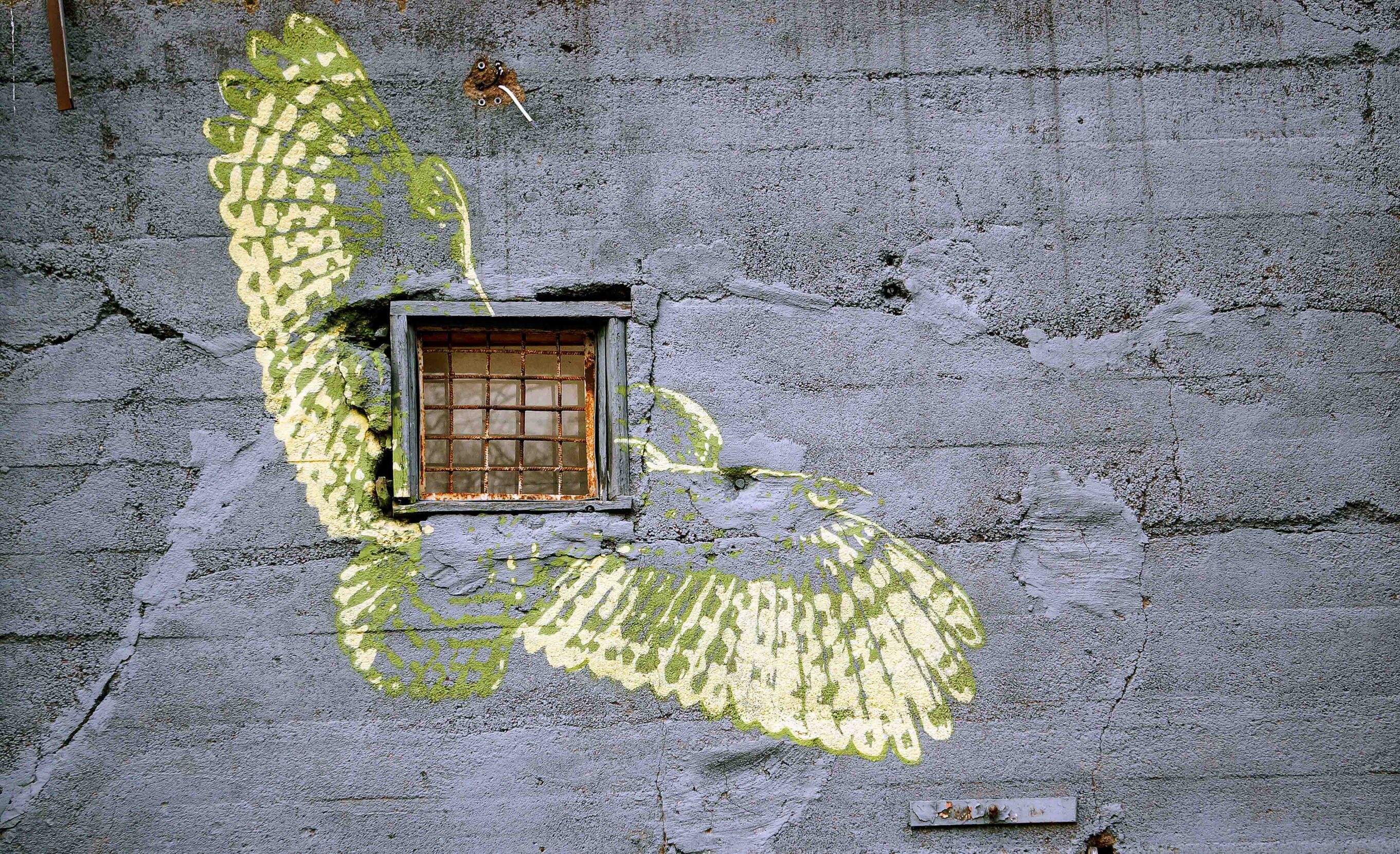
Where once they held only horror, the walls of Lukiškės Prison in Vilnius, Lithuania, now also hold so much more — art, joy, culture, and the defiance of a new generation. Photo: Algimantas Barzdzius / Alamy.
Tim Brinkhof
Tim is a Dutch journalist from Amsterdam who has spent the better part of his adult life traveling around the world as a digital nomad, looking for stories to tell and things to sketch.
Never miss a story
Subscribe for new issue alerts.
By submitting this form, you consent to receive updates from Hidden Compass regarding new issues and other ongoing promotions such as workshop opportunities. Please refer to our Privacy Policy for more information.

